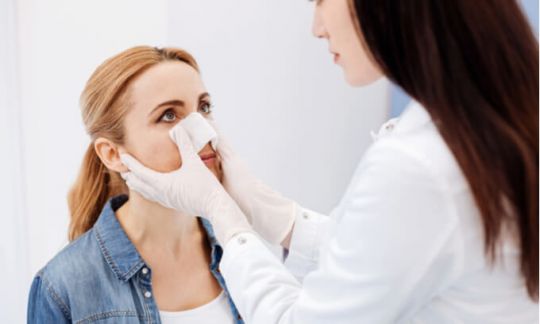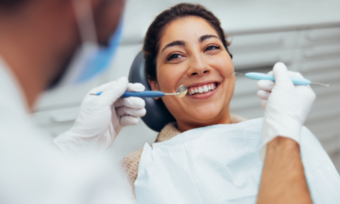How much does rhinoplasty cost in Australia?
What is the typical rhinoplasty cost in Australia, and what do you need to know if you’re considering it?

What is the typical rhinoplasty cost in Australia, and what do you need to know if you’re considering it?
Whether it’s for medical or cosmetic reasons, rhinoplasty can make a significant difference to a person’s life. But it’s major surgery and it’s not cheap. So if you are seriously considering it, it’s a good idea to know in advance what’s involved and how much rhinoplasty costs in Australia.
How much does rhinoplasty cost in Australia?
Whether it’s for medical or cosmetic reasons, rhinoplasty can make a significant difference to a person’s life. But it’s major surgery and it’s not cheap. So if you are seriously considering it, it’s a good idea to know in advance what’s involved and how much rhinoplasty costs in Australia.
The cosmetic surgery industry is big business in Australia. According to the Australasian College of Cosmetic Surgery and Medicine we spend more than $1 billion annually on more than 500,000 cosmetic procedures, making it more popular per capita than in the United States. One common procedure is rhinoplasty, which can be carried out for cosmetic as well as medical reasons.
What is rhinoplasty?
Rhinoplasty is nose surgery, commonly known as a ‘nose job’. It’s a surgical procedure that reshapes or repairs a patient’s nose. As the Australian Society of Plastic Surgeons (ASPS) explains, rhinoplasty may be carried out to improve the appearance of the nose (cosmetic surgery) or to improve how it functions, for example to correct birth defects, breathing issues or repair damage from trauma (reconstructive surgery).
According to cosmetic surgery website Costhetics, there are two surgical approaches used – open and closed surgery. Open surgery involves an incision being made in the tissue at the very base of the nose between the two nostrils, thus “opening” the nose. This surgery is usually a longer operation and better suited to patients who require alterations to the tips of their nose. Open surgery leaves a very small scar, which disappears over time.
In closed surgery, incisions are made entirely inside the nose. Closed surgery avoids a visible scar, but can’t be performed if many alterations to the nose are required.
Both techniques are suited to different situations and surgeons will often have a preference depending on which option they think will give them the best results for a particular patient.
Where can I go to have a rhinoplasty carried out?
When choosing your surgeon, bear in mind the difference between specialist and cosmetic surgeons. According to the government-funded healthdirect website, specialist plastic surgeons in Australia must complete an additional five years of specialist training after qualifying as a doctor. In comparison, any doctor can be a cosmetic surgeon without additional medical training.
If you’re considering having cosmetic surgery overseas, it is important to be aware of the potential risks involved. While you may be able to receive cheaper treatment, the ASPS notes that medical tourism “raises some safety and financial concerns for Australian patients”. It also outlines a list of medical, legal and financial considerations that it says should be factored in before you commit to any overseas medical treatment.
According to the Australian Government’s Smartraveller website, you will also be financially responsible for any costs that arise during or after treatment. These costs will not be covered by Medicare and are unlikely to be covered by travel insurance.
How much does rhinoplasty cost?
Rhinoplasty can cost anywhere between $25,000 and $40,000 in Australia. This figure includes approximately $15,000 to $30,000 for surgeon’s fees (depending on the exact procedure and the time that is required), up to $4,000 for anaesthetist’s fees, and about $9,000 for hospital costs.
You may also need to factor in additional before- and after-care costs such as medical tests, medication and bandages, as well as initial consultation fees, which can cost between $100 to $500 per consultation, according to Costhetics. If you see more than one surgeon, you will also have to pay a fee for each consultation.
Plastic surgeon Dr Peter Callan told Canstar that rhinoplasty has a reputation for being one of the most demanding of surgeries, and in some cases, the time taken to perform a rhinoplasty can be lengthy. He also cautions that you should be aware of what costs may occur if any revisionary surgery is required – surgery to correct or improve on previous rhinoplasty. To get an idea of these costs, you will likely need to consult directly with your surgeon.
Does Medicare cover rhinoplasty?
You may be able to claim a Medicare rebate to help you cover your rhinoplasty costs, depending on why you are getting the surgery.
The Medicare Benefits Schedule (MBS) sets out all the medical services that are subsidised by the government. This includes rhinoplasties that are performed because of “significant acquired, congenital or developmental deformity”. In other words, Medicare will only pay benefits for plastic surgery if it is determined to be medically necessary and not a purely cosmetic procedure.
If you meet the MBS criteria, Medicare will pay you a rebate, which will be a percentage of the listed MBS fee. But keep in mind that medical practitioners are free to set their own fees and these may be higher than the MBS fee.
Does private health insurance cover rhinoplasty?
Private health insurance may help to cover some of the surgical, anaesthetic and hospital costs, again depending on the purpose of the rhinoplasty.
Silver and Gold tier hospital policies must cover plastic and reconstructive surgery where it is medically necessary to investigate or treat physical deformity. This may include abnormalities resulting from an illness or accident, or abnormalities present from birth such as nasal deformities that cause breathing problems.
Coverage – as well as the terms and conditions that apply to it – can differ depending on your insurer and policy, so it’s a good idea to check with your health insurance provider upfront to confirm what will and won’t be covered.
Finance options for rhinoplasty
Beyond the potential funding options within the public and private health insurance systems, some lenders offer ‘medical loans’, which are personal loans designed to help you pay certain medical bills.
If you are thinking about taking out a medical loan to help cover rhinoplasty costs, make sure you can afford to repay the loan within the specified time period and bear in mind the impact the repayments might have on your existing commitments, as well as your credit score. It can also be a good idea to shop around and compare features such as interest rates, fees and charges.
Dr Callan says most surgeons do not encourage the use of finance for purely cosmetic procedures.
Some surgical practices may also offer payment plans, which allow you to pay for the cost of the procedure over a period of time. It is worthwhile to discuss payment options with your surgeon to see what is available to you and consider your options carefully before committing.
Cover image source: Dmytro Zinkevych/Shutterstock.com
Talk to a health insurance specialist to find the policy that suits your needs
This article was reviewed by our Content Editor Alasdair Duncan before it was updated, as part of our fact-checking process.

 Psychiatric services
Psychiatric services
 Rehabilitation
Rehabilitation
 General dental
General dental
 Physiotherapy
Physiotherapy
Try our Health Insurance comparison tool to instantly compare Canstar expert rated options.
Talk to a health insurance specialist to find the policy that suits your needs






